Sierra Tucson offers effective, comprehensive treatment for individuals struggling with mental health issues. Learn more about the signs and symptoms of suicidal ideation.
Understanding Suicidal Ideation
Learn about suicidal ideation
Suicidal ideation refers to the presence of intrusive, continuous thoughts regarding ending one’s own life. The existence of these thoughts can range in severity from minimal considerations, to the development of detailed plans to take one’s life. The presence of suicidal ideation, while devastating, does not mean that an individual will follow through and take their own life through suicide. There is always the possibility, however, that an individual will step over the line between thoughts and action. Therefore, it is critical that individuals who are experiencing thoughts of suicide obtain treatment as early as possible to prevent this type of tragic outcome.
Statistics
Suicidal ideation statistics
It is not always possible to correctly decipher the true prevalence of suicidal ideation, as this is not something that is outwardly noticeable or always discussed. However, there has been an exceptional amount of research conducted on the prevalence of suicidal behaviors, which can be the upsetting result of continued suicidal ideation. Amongst children and adolescents between ages 10 and 14, the Centers for Disease Control and Prevention (CDC) has reported that suicide is the fourth leading cause of death. In young individuals between the ages of 15 and 25, suicide is the third leading cause of death. For adults between 25 and 34, it is the second, and for those between 35 and 54, it is the fourth.
Causes and Risk Factors
Causes and risk factors for suicidal ideation
Many researchers have deduced that the risk of suicidal ideation is the result of a combination of one’s genetic background, family history, specific environmental elements, and other potential risk factors.
Genetic: While one’s risk of suicidal ideation itself is not genetic, the mental health illnesses, of which suicidal thoughts are symptoms, can be hereditary. Conditions that include bipolar disorder and depressive disorders are known to bring on thoughts of suicide, and the development of these disorders can happen when an individual has a genetic predisposition for them.
Environmental: Specific environmental factors can significantly impact the development of suicidal ideation. Experiencing bullying, sexual abuse, physical abuse, neglect, or emotional abuse can all cause a decrease in one’s self-esteem and feelings of self-worth, possibly causing thoughts of suicide to develop. In addition, being the victim of these types of travesties can also cause individuals to fixate on putting their pain and suffering to an end, which could bring on the onset of suicidal thoughts and behaviors as well.
Risk Factors:
- Loss of a loved one
- Having a friend or loved one commit suicid
- Being the victim of abuse and/or neglect
- Lacking a healthy support system
- Personal history of mental illness
- Family history of depressive disorders, bipolar disorder, or other types of mental illness
- Being the victim of bullying
- Personal or family history of substance abuse
Signs and Symptoms
Signs and symptoms of suicidal ideation
When individuals are grappling with suicidal ideation, it is not always obvious to those around them. However, there are some cognitive, physical, behavioral, and psychosocial symptoms that might develop that could indicate that these thoughts are impacting an individual. It is imperative to take note of the possible warning signs of an individual that is faced with suicidal ideation:
Behavioral symptoms:
- Isolating oneself
- Chronic absences from work or school
- Abusing drugs and/or alcohol
- Giving away one’s possessions
- Talking or writing about death
- Drafting suicide notes
- Engaging in self-harm or otherwise reckless behaviors
- No longer participating in activities or hobbies that one once enjoyed
Physical symptoms:
- Changes in one’s physical appearance, such as no longer caring about how one looks or suddenly lacking proper hygiene
- Decline in the ability to experience pleasure
- Changes in eating patterns
- Hypersomnia or insomnia
- Injuries that result from self-injury
- Panic attacks
- Fluctuations in weight
Cognitive symptoms:
- Concentration difficulties
- Chronic, invasive, and unwanted thoughts about death
- Memory impairment
Psychosocial symptoms:
- Anxiety
- Agitation
- Irritability
- Feelings of worthlessness
- Periods of emotional detachment
- Depression
- Feelings of helplessness
- Feelings of hopelessness
Effects
Effects of suicidal ideation
Continued suicidal ideation has the possibility to lead to dramatic destruction in the lives of those who are afflicted with these pervasive thoughts. Some of these detriments can include the following:
- Decline in academic or occupational performance, potentially resulting in academic failure or job loss
- Social withdrawal and isolation, potentially resulting in family discord, marital strife, and other disturbances within important relationships and friendships
- Deteriorating self-esteem, leading to worsening of self-destructive thoughts and behaviors
- Making attempts at suicide
- Beginning to abuse drugs and/or alcohol, possibly resulting in the development of an addiction
In addition, the longer that individuals keep suffering from suicidal ideation, the more likely they are to start partaking in self-harming behaviors. This can lead to many different physical traumas. Depending on the specific means of self-harm that is exhibited, the following effects can occur:
- Damage to vital organs
- Organ failure
- Unintentional death
- Broken bones
- Paralysis
- Brain damage
- Permanent scarring
- Hemorrhaging
- Tissue damage
Co-Occurring Disorders
Suicidal ideation and co-occurring disorders
When an individual is battling ongoing thoughts of suicide, it is likely that they are struggling with a mental health condition that has led to the onset of such thoughts. Some of the most common mental health problems associated with the presence of suicidal ideation symptom include:
- Schizophrenia
- Eating disorders
- Obsessive-compulsive disorder (OCD)
- Anxiety disorders
- Posttraumatic stress disorder (PTSD)
- Borderline personality disorder
- Major depressive disorder
- Persistent depressive disorder
- Bipolar disorder
- Substance use disorders













